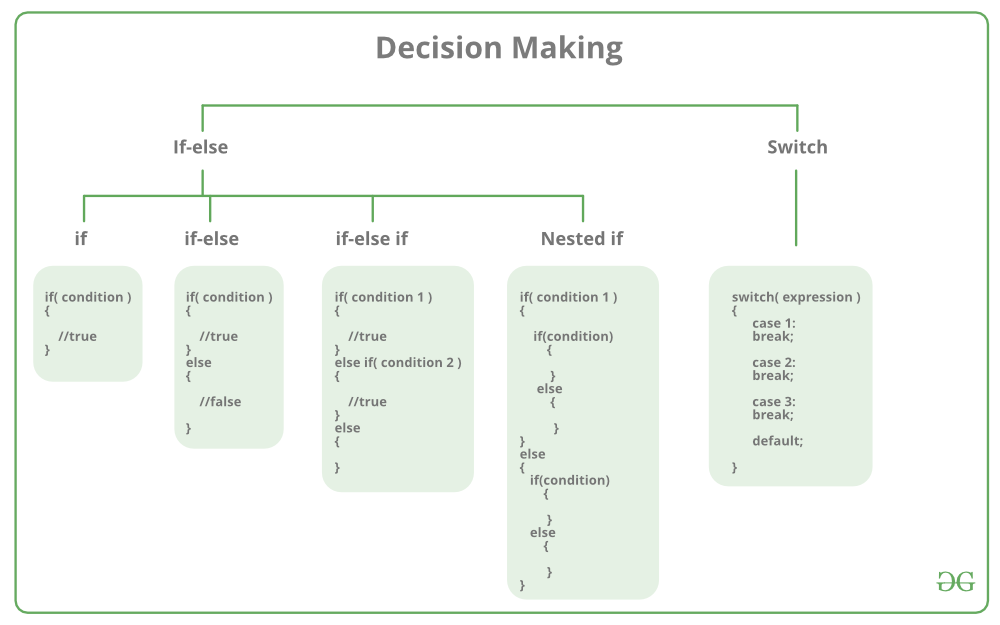Hello and Welcome to my Programming Blog.Here we learn about Different Programming like C,C++,JAVA,Python,etc
C PROGRAMMING
1. INTRODUCTION
What is Programming?
Computer programming is a medium for us to communicate with computers just like we use Hindi or English to communicate with each other, programming is a way for us to deliver our instructions to the computer.
What is C?
C is a programming language. C is one of the oldest and finest programming languages. C was developed by Dennis Ritchie in 1972.
Uses of C
C is a language that is used to program a wide variety of systems. Some of the uses of C are as follows:
- Major parts of Windows, Linux, and other operating systems are written in C.
- C is used to write driver programs for devices like Tablets, Printers, etc.
- C language is used to program embedded systems where programs need to run faster in limited memory.
- C is used to develop games, an area where latency is very important i.e. computer has to react quickly on user input.
Chapter 1: Variables, Constants, and Keywords:
Variables
A variable is a container that stores a ‘value’. In the kitchen, we have containers storing rice, dal, sugar, etc. Similar to that variable in c stores value of a constant. Example:
a = 3; //a is assigned “3”
b =4.7; //b is assigned “4.7”
c=’A’; //c is assigned “A”
Rules for naming variables in c:
1. The first character must be an alphabet or underscore(_).
2. No commas, blanks allow.
3. No special symbol other than underscore is allowed
4. Variable names are case sensitive
Constants
An entity whose value doesn’t change is called a constant.
Types of constant
Primarily there are 3 types of constant:
- Integer constant = -1,6,7,9
- Real constant = -322.1,2.5,7.0
- Character constant = ‘a’,’$’,’@’(must be enclosed within single inverted commas)
Keywords
These are reserved words, whose meaning is already known to the compiler. There are 32 keywords available in c:
| auto | double | int | struct |
| break | long | else | switch |
| case | return | enum | typedef |
| char | register | extern | union |
| const | short | float | unsigned |
| continue | signed | for | void |
| default | sizeof | goto | volatile |
| do | static | if | while |
Our first C program
The basic structure of a C program
All c programs have to follow a basic structure. A c program starts with the main function and executes instructions presents inside it. Each instruction terminated with a semicolon(;)
There are some basic rules which are applicable to all the c programs:
- Every program's execution starts from the main function.
- All the statements are terminated with a semi-colon.
- Instructions are case sensitive.
- Instructions are executed in the same order in which they are written.
Comments
Comments are used to clarify something about the program in plain language. It is a way for us to add notes to our program. There are two types of comments in c:
- Single line comment: //This is a comment.
- Multi line comment : /*This is multi line comment*/
Compilation and execution
A compiler is a computer program which converts a c program into machine language so that it can be easily understood by the computer
A program is written in plain text. This plain text is a combination of instructions in a particular sequence. The compiler performs some basic checks and finally convert the program into an executable.
Library functions
C language has a lot of valuable library functions which is used to carry out a certain task, for instance, printf function is used to print values on the screen.
printf(“This is %d”,i);
// %d for integers
// %f for real values
// %c for characters
Types of variables
- Integer variables - int a=3;
- Real variables - int a=7.7 (wrong as 7.7 is real) ; float a=7.7;
- Character variables - char a=’B’;
Receiving input from the user
In order to take input from the user and assign it to a variable, we use scanf function.
The syntax for using scanf:
& is the “address of” operator and it means that the supplied value should be copied to the address which is indicated by variable i.

No comments:
Post a Comment